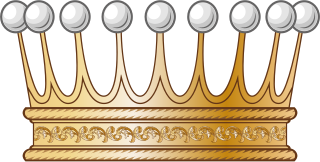
Graf is a historical title of the German nobility and later also of the Russian nobility, usually translated as "count". Considered to be intermediate among noble ranks, the title is often treated as equivalent to the British title of "earl".
Ezzo, sometimes called Ehrenfried, a member of the Ezzonid dynasty, was Count Palatine of Lotharingia from 1015 until his death. As brother-in-law of Emperor Otto III, father of Queen Richeza of Poland and several other illustrious children, he was one of the most important figures of the Rhenish history of his time.
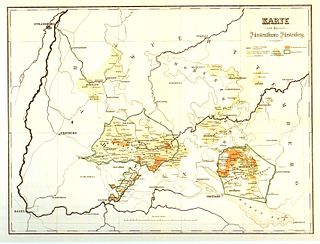
Fürstenberg was a county, and later a principality (Fürstentum), of the Holy Roman Empire in Swabia, which was located in present-day southern Baden-Württemberg, Germany. Its ruling family was the House of Fürstenberg.

The German Emperor was the official title of the head of state and hereditary ruler of the German Empire. A specifically chosen term, it was introduced with the 1 January 1871 constitution and lasted until the official abdication of Wilhelm II on 9 November 1918. The Holy Roman Emperor is sometimes also called "German Emperor" when the historical context is clear, as derived from the Holy Roman Empire's official name of "Holy Roman Empire of the German Nation" from 1512.
The Landgraviate of Brabant was a small medieval fiefdom west of Brussels, consisting of the area between the Dender and Zenne rivers in the Low Countries, then part of the Holy Roman Empire.

The House of Schwarzenberg is a German (Franconian) and Czech (Bohemian) aristocratic family, formerly one of the most prominent European noble houses. The Schwarzenbergs are members of the German and Czech nobility, and they once held the rank of Princes of the Holy Roman Empire. The family belongs to the high nobility and traces its roots to the Lords of Seinsheim during the Middle Ages.

The Ludovingians or Ludowingians were the ruling dynasty of Thuringia and Hesse during the 11th to 13th centuries.

William VIII ruled the German Landgraviate Hesse-Kassel from 1730 until his death, first as regent (1730–1751) and then as landgrave (1751–1760).

The Duchess of Brabant refers to a woman married to the Duke of Brabant. But this was only as of 1840 when it was revived as an honorific title for the Crown Prince of the newly created Kingdom of Belgium. There have been only three royal duchesses.
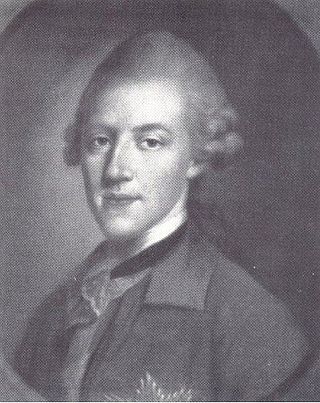
Frederick V Louis William Christian, Landgrave of Hesse-Homburg was from 1751 to his death landgrave of Hesse-Homburg.
The Duchy of Thuringia was an eastern frontier march of the Merovingian kingdom of Austrasia, established about 631 by King Dagobert I after his troops had been defeated by the forces of the Slavic confederation of Samo at the Battle of Wogastisburg. It was recreated in the Carolingian Empire and its dukes were appointed by the king until it was absorbed by the Saxon dukes in 908. From about 1111/12 the territory was ruled by the Landgraves of Thuringia as Princes of the Holy Roman Empire. When Frederick IV, the last independent ruler of Thuringia died in 1440, the territory passed to his nephew, the Saxon elector Frederick II.

Countess Juliane of Nassau-Siegen, German: Juliana Gräfin von Nassau-Siegen, official titles: Gräfin zu Nassau, Katzenelnbogen, Vianden und Diez, Frau zu Beilstein, was a countess from the House of Nassau-Siegen, a cadet branch of the Ottonian Line of the House of Nassau, and through marriage landgravine of Hesse-Kassel.

Elisabeth of Hesse was a Landgravine of Hesse by birth and by marriage Countess Palatine of Zweibrücken and later Countess Palatine of Simmern.
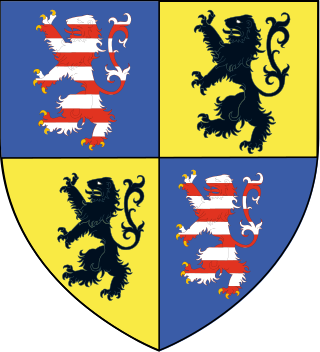
Frederick IV, nicknamed the Peaceful or the Simple, was a member of the House of Wettin and Margrave of Meissen who ruled as the last independent Landgrave of Thuringia from 1406 until his death.

Ludwig II, Landgrave of Thuringia, nicknamed Louis the Iron.
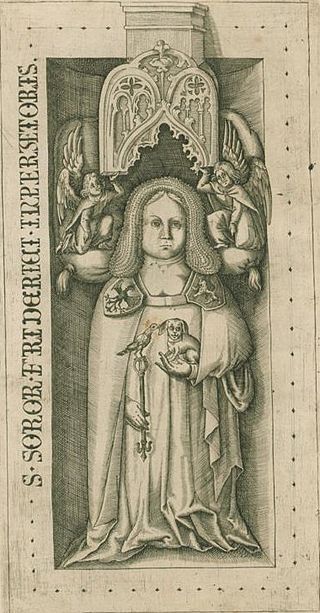
Judith of Hohenstaufen, also known as Judith of Hohenstaufen or Judith of Swabia, a member of the Hohenstaufen dynasty, was Landgravine of Thuringia from 1150 until 1172 by her marriage with the Ludovingian landgrave Louis II. She was baptized as Judith, but was commonly called Jutta or Guta. Sometimes the Latinate form Clementia was used, or Claritia or Claricia.
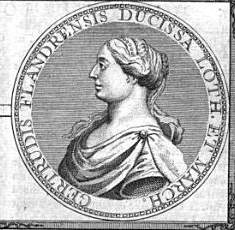
Gertrude of Flanders, was a Countess of Louvain and Landgravine of Brabant by marriage to Henry III, Count of Leuven, and a Duchess of Lorraine by marriage to Theodoric II, Duke of Lorraine. At the time the duchy was the upper Lorraine, since 959 separated from the duchy of Lower Lorraine.

Upper Alsace was a landgraviate of the Holy Roman Empire centred on Ensisheim and Landser, north of the County of Ferrette (Pfirt). The counts of Habsburg ruled the territory from the 1130s down to its cession to France in the 17th century.
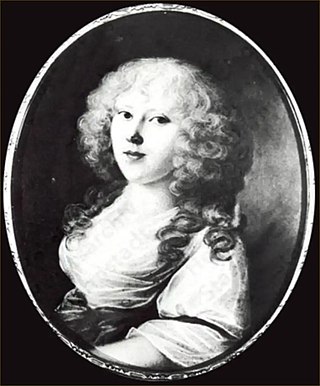
Landgravine Auguste Fredericka of Hesse-Homburg (full German name: Auguste Friederike, Landgräfin von Hessen-Homburg; 28 November 1776, Bad Homburg vor der Höhe, Landgraviate of Hesse-Homburg, Holy Roman Empire – 1 April 1871, Ludwigslust, Grand Duchy of Mecklenburg-Schwerin was a German noblewoman.
The pagus of Brabant was a geographical region in the early Middle Ages, located in what is now Belgium. It was the first region known to have been called Brabant, and it included the modern capital of Belgium, Brussels. It was divided between the neighbouring counties of Flanders, Hainaut and Louvain (Leuven) in the eleventh century. It was the eastern part, which went to the Counts of Louvain, which kept the name in use, becoming the primary name of their much larger lordship. This led to other regions later being named Brabant - in particular, the French and Dutch-speaking areas east of the Dyle, including Leuven and Wavre, which are still known as "Brabant"; and secondly the province of North Brabant in the Netherlands.

















